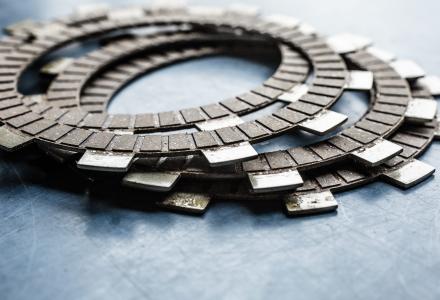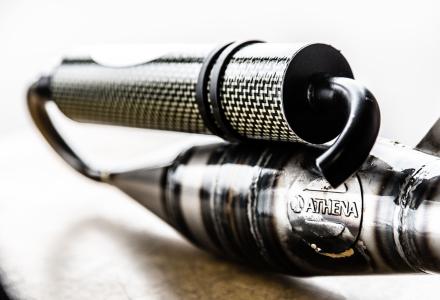Seized Piston: Symptoms, Causes and How to Fix the Engine
Piston seizure, a dreaded scenario for every motorcyclist, is not exclusive to racers and can lead to substantial damage, potentially causing the engine to lock up.
Fortunately, it is not very common. A bit of attention and some precautions can make it a very rare occurrence. Yet, it is still an event that has significant complications for the engine: once a motorcycle has a seized engine there is not much that can be done, other than replace it and machine or replace the cylinder. Avoid riding your motorcycle or scooter at the first sign of trouble to prevent further damage to other engine parts.
Read on to learn what happens when an engine is seized up, the symptoms of a cracked piston, and how to keep your motorcycle in good operating conditions.

Learn more about the role and operation of the motorcycle piston inside the engine.
The piston, a key component in internal combustion engines, transforms combustion energy into mechanical work, delivering it through the connecting rod to the crankshaft as rotational force.
Operating in extreme conditions of high pressure, inertial forces, and temperatures, pistons move with a reciprocating linear motion inside the cylinder.
Pistons feature a roughly conical shape and comprise the following elements:
- Crown: the upper part of the piston, which also serves as the movable lower part of the combustion chamber.
- Head: the top side part of the piston (above the wrist pin), where grooves housing the piston rings, also known as seal rings, and the oil scraper ring (only for 4-stroke engines) are located.
- Skirt: the side part below the head, guiding the piston's movement and transferring the lateral thrust due to the connecting rod's inclination to the cylinder wall.
- Wrist pin: the pin that connects to the connecting rod, inserted with minimal clearance.
Around the piston are the piston rings: these play a crucial role as they help cool the piston, ensure combustion chamber pressure retention, prevent oil from the crankcase from mixing with the fuel or combustion gases in 4-stroke engines, and above all, provide adequate lubrication between the cylinder walls and the piston.
What a Seized Engine Means
When there is excessive friction, usually due to a lack of proper lubrication or incorrect setting of fundamental engine parameters such as ignition timing, squish, and carburetion, the engine seizes. This occurs because the friction overheats the involved parts and effectively eliminates the clearance between the piston and cylinder.
The parts that can suffer the most damage are the piston surfaces, often the side, and the cylinder wall. Friction between these two elements can cause marks of varying depth depending on the duration and type of friction. In some cases of seized engine, the cylinder crown and head are damaged, and in the most severe cases, the piston's aluminum may melt, damaging it permanently.
In some instances, there is even a risk of rod failure, involving not just the cylinder and piston but also the connecting rod, crankshaft, and even the engine head.
Cracked Piston or Seized Engine Symptoms
How can you tell if you have a seized engine, or if the problem lies elsewhere? The most obvious case is when the engine locks up and won't start or, worse, locks up suddenly (potentially locking the wheel too), but depending on the severity of the problem, this may not be the only symptom. Unfortunately, when the engine tends to shut off or experiences a sudden loss of power, it most likely means the engine seized or is seizing. Of course, engine lock-up is the worst-case scenario, whether it happens on the road or during a motocross race, where a bad landing from a jump due to the bike shutting down or locking up could end a career or worse. In motocross competitions, engines are subject to intense stress, including revving without load and sometimes irregular oil distribution, increasing the risk of a seized engine.
For scooters or motorcycles with a kickstarter, a preliminary check is to see if it feels locked or has low compression. Operating the kickstarter, the engine may feel "tight," meaning with increased resistance due to friction within the engine itself. Another useful indicator to understand if there is an impending seized engine is any unusual sounds: ticking, metallic noises, or light knocks, which unfortunately appear just moments before the engine locks up.

Seized Piston: Causes and Reasons
As mentioned, a seized engine originates mainly from excessive friction. This is more common in two-stroke engines where lubrication occurs through the fuel, thus sometimes all it takes is incorrect carburetion or an incorrect quantity of oil to cause problems.
A seized four-stroke engine can also happen. This typically is due to lack of oil, or the use of poor quality oil, or choosing an entirely wrong viscosity.
Even with proper lubrication, a seized engine can happen due to simple wear and tear over time. For example, a competition-prepped offroad motorcycle's piston usually lasts around 40-50 hours.
This is quite rare in modern engines but more common in older ones and small displacement two-strokes, especially under prolonged, intense use.
An engine seize can also stem from a cooling system issue leading to excessive engine temperature that causes the component to expand too much.
How to Prevent a Seized Engine on Your Motorcycle
To avoid a seized engine, Athena advises to perform careful carburetion adjustment, a key aspect to avoid too lean a mixture (a rich carburetion issue is more manageable: the worst-case scenario is that the motorcycle may flood or fail to start). If the motorcycle was originally detuned, installing a specific carburetion kit, including replacing all carburetor tuning components like jets, atomizers, and needle, is crucial. These tasks demand technical skill and good experience. If unsure on how to proceed, consult a competent, professional mechanic specialized in carburetor installation and tuning.
Lubrication, as mentioned, is also crucial.
A time-tested piece of advice is to allow the engine to break in, especially after making modifications (the initial adjustment phases are the most critical). Another important tip is to avoid revving the engine too hard when it is cold, meaning not to operate it at a high RPM.
What to Do in Case of a Seized Piston and how to Fix the Engine
First, assess the damage by dismantling the engine and checking if only the piston is damaged or the cylinder as well. In many cases, the damaged components cannot be repaired and must be replaced.
If you don’t know how to disassemble your motorcycle's engine, bring it in to a workshop. How much does It cost to fix a seized engine? The cost of the repair varies greatly depending on the type of motorcycle or scooter and the extent of damage caused by the seized engine. If the damage did not compromise the cylinder's structure, it is possible to have it machined by specialized companies or workshops for a complete restoration to factory conditions.
How to Choose Pistons and Motorcycle Parts Online
On its website, Athena offers pistons, cylinders and cylinder kits as replacement parts for a wide range of scooters and motorcycles, including street, cross, and off-road types, suitable for both 2-stroke and 4-stroke engines.
Athena also offers a line of motorcycle racing pistons that guarantee performance and reliability equal to original spare parts at a highly competitive price. Athena's motorcycle pistons are made from a high-silicon aluminum alloy through casting or reverse extrusion forging and are coated with a molybdenum disulfide surface layer. Thanks to this special coating, Athena's motorcycle racing pistons offer considerable smoothness compared to market products, ensuring increased performance, longer life, reduced friction, and less noise.
Additionally, the motorcycle piston rings used by Athena are made from a special Made in Japan steel and are coated with PVD or CNR for wear resistance. Athena Sporting pistons are made from select raw materials, engineered in Italy, and then subject to strict dyno and track testing to ensure top-level performance and reliability.




